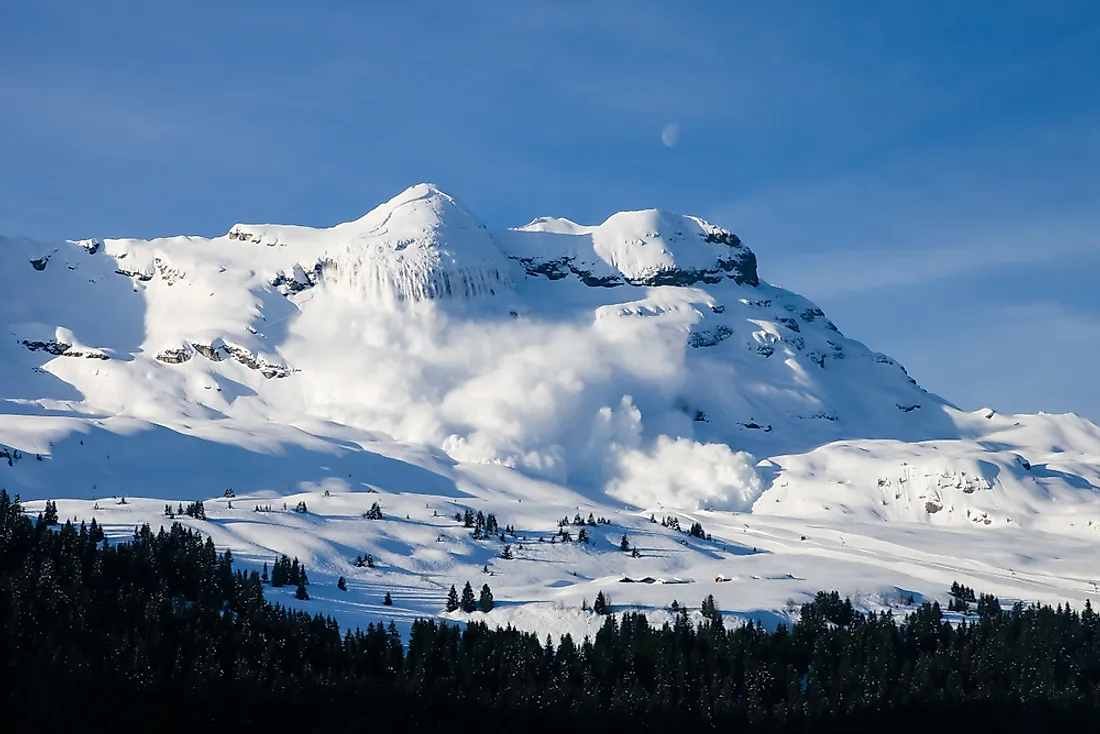How Many Types Of Avalanches Are There?

An avalanche is an event in which a large mass of snow moves down a steep slope after the snowpack is fractured. The term traces its roots to the French language from the word avalance which refers to a descent. Some conditions lead to the formation of avalanches such as overloading, temperature, and the angle of the slope. The requirements for avalanches to form exist in various regions around the world with some nations such as Peru and Argentina experiencing a high number of avalanches. Avalanches are classified into three main types: powder avalanches, wet avalanches, and slab avalanches.
Types of Avalanches
Powder Avalanche
Powder avalanches are common avalanches and are distinguished from other avalanches by the fact that the snow particles are typically suspended in fluid turbulence. They can form as a result of any of the primary triggers, and with all types of snow, however, it more commonly occurs with fresh snow. They travel at high velocities with some even exceeding 190 mph. The high speed allows the avalanche to cover long distances and in some cases also move uphill. They are usually some of the heaviest avalanches as they can weigh around 10,000,000 tons. Due to their large mass and velocity at which they are moving, powder avalanches are very destructive.
Slab Avalanche
Another common avalanche is the slab avalanche. The snow that makes up this type of avalanche is typically deposited by wind as it flows over an area. Their appearance is distinct as they look like a giant block moving independently of its surroundings. Slab avalanches are further divided into two: soft slabs and hard slabs. Soft slabs are made up of fresh snow while hard slabs form over time usually due to the action of wind. Soft slabs may transform into hard slabs as the particles bind together. Soft slabs may be present on any section of a slope provided that the condition for their formation exists. Human activities such as snowboarding and skiing have been known to trigger the avalanche. Slab avalanches are some of the most fatal as they cause close to 75% of avalanche deaths with the person triggering the avalanche typically being the victim. Slab avalanches are more common in winter than in other seasons although on mountains like Mont Blanc they may occur during the summer.
Wet Avalanche
The other primary type of avalanche is the wet avalanche which, according to the National Disaster Association, is easier to predict than the other types. They occur after the snow has melted or accumulated vast quantities of water. The snow is usually heavy which causes it to travel at low speeds. In spite of the low velocity, wet avalanches are exceptionally destructive because of their great weight. The avalanche destroys much of the vegetation in its path leaving the ground bare in its wake.
Devastating Avalanches
Several of the avalanches that have occurred throughout human history have had catastrophic impacts. One of the most destructive avalanches ever recorded happened in 1970 in Peru, and it caused the deaths of nearly 20,000 people. Peru had also been affected by an avalanche in 1962 that caused 4000 deaths. Another deadly avalanche occurred in Italy in 1916 causing 10,000 fatalities.











